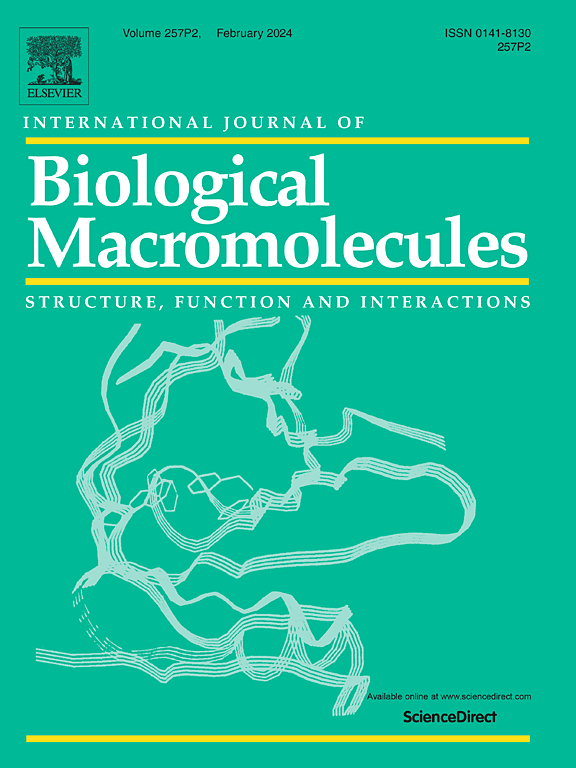Astral-DIA 蛋白质组学:鉴定绵羊奶、山羊奶和牛奶中的差异蛋白质。
IF 8.5
1区 化学
Q1 BIOCHEMISTRY & MOLECULAR BIOLOGY
International Journal of Biological Macromolecules
Pub Date : 2024-12-01
DOI:10.1016/j.ijbiomac.2024.137866
引用次数: 0
摘要
乳制品对人类健康大有裨益,不同乳制品之间的营养差异也备受关注。本研究采用 DIA 蛋白质组学技术,结合平行反应监测(PRM)作为验证方法,对绵羊奶、山羊奶和牛奶中的蛋白质进行了定性和定量分析。共鉴定出 4316 种蛋白质。β-2-糖蛋白1和氨肽酶可作为绵羊奶的潜在生物标记物,纤维蛋白原α链和α-1-B糖蛋白可作为山羊奶的潜在生物标记物,血管生成素-1和丝裂蛋白家族G成员1可作为牛奶的潜在生物标记物。功能分析显示,这些不同的蛋白质通过不同的途径富集,如补体和凝血级联。这些数据揭示了蛋白质含量和生理功能的差异,为乳制品营养研究和掺假鉴定提供了重要依据。本文章由计算机程序翻译,如有差异,请以英文原文为准。
Astral-DIA proteomics: Identification of differential proteins in sheep, goat, and cow milk
Dairy products are of great benefit to human health, and the nutritional differences between different dairy products have attracted attention. In this study, DIA proteomics technique, combined with parallel reaction monitoring (PRM) as a validation method, was used for the qualitative and quantitative analysis of proteins in sheep, goat, and cow milk. In total, 4316 proteins were identified. Beta-2-glycoprotein 1 and aminopeptidase can be used as potential biomarkers for sheep milk, fibrinogen alpha chain and Alpha-1-B glycoprotein can be used as potential biomarkers for goat milk, and angiogenin-1 and Serpin family G member 1 can be used as potential biomarkers for cow milk. Functional analysis showed that these different proteins were enriched through different pathways, such as complement and coagulation cascades. These data reveal the differences in protein content and physiological functionality and provide an important basis for the study of dairy nutrition and adulteration identification.
求助全文
通过发布文献求助,成功后即可免费获取论文全文。
去求助
来源期刊
CiteScore
13.70
自引率
9.80%
发文量
2728
审稿时长
64 days
期刊介绍:
The International Journal of Biological Macromolecules is a well-established international journal dedicated to research on the chemical and biological aspects of natural macromolecules. Focusing on proteins, macromolecular carbohydrates, glycoproteins, proteoglycans, lignins, biological poly-acids, and nucleic acids, the journal presents the latest findings in molecular structure, properties, biological activities, interactions, modifications, and functional properties. Papers must offer new and novel insights, encompassing related model systems, structural conformational studies, theoretical developments, and analytical techniques. Each paper is required to primarily focus on at least one named biological macromolecule, reflected in the title, abstract, and text.

 求助内容:
求助内容: 应助结果提醒方式:
应助结果提醒方式:


